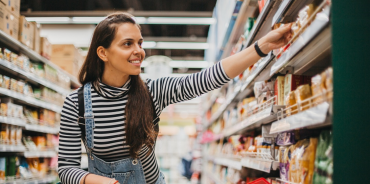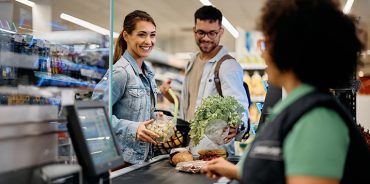An introduction to offsite retail media
Grocery stores and websites present brands with an incredible advertising opportunity, giving them access to millions of customers who are already looking to buy. Today, however, retail media doesn't stop with retailer-owned properties. With the right approach, advertisers can extend their reach further still, using data-driven insights to engage customers across a range of other channels.
In the latest in a series of posts exploring the realities of retail media today, Ciara Schmidt discusses the subject of “offsite” media, and how it can be used to communicate with shoppers across a range of partner-owned platforms.
At its core, retail media revolves around two things: inventory and data. The first of those, of course, provides advertisers with extensive reach across a range of physical and digital assets. It’s the second, though, that enables the deep insights into customer behaviours that sets retail media apart from other advertising disciplines. First-party (or retailer-owned) data gives brands an unprecedented level of precision when it comes to audience targeting.
What if you could take those insights and apply them to other media channels, though? What if you could target customers based on their purchases even when they’re browsing outside of a retailer’s ecosystem?
As detailed in the last post in this series, onsite media relates specifically to advertising opportunities within a retailer’s own environment (i.e., their website or store). “Offsite”, on the other hand, speaks to the opportunity to engage customers on media channels outside of the retail environment – combining first-party data with third-party media in order to create a truly cohesive opportunity for brand advertisers.
While there are a variety of potential applications for offsite media, three in particular have gained the most traction to date: the open web, digital TV, and social media.
Let’s look at each.
Online advertising
Web ads have been commonplace since the birth of the internet, ranging from banners and pop-ups to wholesale website takeovers. Typically, those ads are targeted at visitors based on factors like demographics, browsing history, and their interactions with the website in question.
Retailer data, of course, enables the creation of a single view of a customer, combining their online and offline purchases into a complete picture of their shopping behaviours. That makes it easy and efficient for brands to engage with more of the “right” shoppers – those most likely to buy their products.
In many cases, that data can also be matched with a customer’s online profile, allowing advertisers to reach specific shoppers across the internet. To that end, a growing number of online media networks have begun partnering with retailers, providing their shared CPG clients with the opportunity to engage with customers as they browse their favourite websites.
Those ad placements are typically linked either through to the retailer’s ecommerce hub, or back the brand’s own website.
Broadcaster Video on Demand (BVOD)
Many – if not most – broadcasters now offer their programming on demand, allowing people to watch what they want when they want through Smart TVs and other connected devices. Those services typically require viewers to log in using an email address, which presents an opportunity to unite their BVOD profile with their retail one.
Embracing the same audience-centric principles explained above, this presents brands with the opportunity to deliver targeted campaigns to specific audiences as they catch up on their favourite TV content.
Social media
As is the case with “traditional” digital media sites, social media platforms like Facebook, Pinterest, and Instagram usually offer their own targeting capabilities to brand advertisers. Increasingly, though, those platforms are also beginning to partner with retailers, giving brands the same targeting opportunities they’d see in the onsite space.
Meta Audiences, for instance, allows brands to share audiences from some retailers directly with their Meta Ads Manager account. That service also provides comprehensive forecasting capabilities, allowing users to understand predicted campaign performance before setting it live. Pinterest does the same, enabling CPGs to deliver highly targeted campaigns across static, video, carousel ads, and more.
Across all of these channels, closed-loop reporting matches up online and in-store sales with ad exposure by user, providing clear proof of performance.
One of the most enticing aspects of retail media is that it provides brands with the ability to be laser targeted with their spending, focusing in on the key audiences most likely to deliver returns. With offsite, CPGs can extend that capability further still, ensuring that they apply the same level of data-driven diligence to an even broader set of channels and placements.
Next time, we’ll explore the subject of experiential marketing – and how inspiration plays a vital role in customer engagement.
TOPICS
RELATED PRODUCTS
Helping brands get the most from retail media
Retail Media & Audience Targeting solutionsMake Retail Media work for your business with Customer Data Science
Retail Media solutionsThe latest insights from our experts around the world



